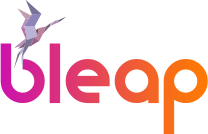Upon understanding your category, buyers’ persona and website user experience journey, create an SEO campaign strategy with specific goals to achieve and start working. Write down these goals. Have a strategy for both On-site as well as Off-site optimization.
Not only improve your website’s search rankings but also the overall site experience for your customers.
On-page optimization(SEO):
-
- Technical Optimization – Optimize URL structure, site map, title tags, Meta tags & description, image tags, XML sitemap, keyword density, page download speed, internal and external site links, site navigation, domain authority and page authority.Your site map is a model of your website design which will provide navigation to your visitor. It will decide the experience of your users on your page.
The Title tags are the title of your webpage displayed on the search page of Google. Only 50-60 words of your title will be displayed on the search engine page. To have a good title tag have a proper title length, have a unique title for every page, put keywords first, write your customers need.Meta Tags provide the description of your page under title tags.Your Meta Tags will decide the click through rate (CTR) as they give the brief description of the page and its content to the visitor.
My advice to you for Meta tags is; have an aligning description to your title and blog content.
- Content Optimization – Content is King. Content when optimized is the Emperor. Revise, rewrite and optimize content on your site to improve both user experience and SEO. Never miss on having all the required keywords in your content.
- Technical Optimization – Optimize URL structure, site map, title tags, Meta tags & description, image tags, XML sitemap, keyword density, page download speed, internal and external site links, site navigation, domain authority and page authority.Your site map is a model of your website design which will provide navigation to your visitor. It will decide the experience of your users on your page.
Off-page(SEO) Optimization:
What’s the quickest and the easiest way to get better search engine rankings? That’s right, Off-page SEO. It’s a combination of various activities like directory submission, social bookmarking, article submission, blog posting and back links building. Google may deny it, but their ranking algorithm still relies heavily on the quantity and quality of referring domains. The more you have – the higher you climb.
The truth is, getting high rankings turn out to be a real headache, especially after yet another Google update.
Follow these 4 steps for making your off-page strategy effortless.
Step 1: Do a thorough keyword research. Use proprietary tools to arrive at a comprehensive list of targeted keywords.
You can use keyword research tools like – Google adwords: Keyword planner, Google correlate,
Keyword In, SEMrush, Moz
Step 2: In order to rank higher on Google, navigation and user experience play the most crucial role. Ensure that the URL structure of your website is balanced and clear.
Step 3: What are the top 10 keywords for your business? Which competitor of yours is running behind those keywords? Do an in-depth study and plan your SERP journey accordingly. Focus your efforts on identifying the right niche and bring your site up the Google search in an affordable manner.
Step 4: Prepare a detailed backlinks building plan. The more quality backlinks your site has, the higher rankings in Google it receives.
Conversion Optimization
Optimize your Search Engine campaigns for both users and search engines. Conversion optimization is a strategy to increase how many visitors to your site actually convert into customers. Optimizing your site for conversion can dramatically improve everything from your bounce rate to your ROI. Whether this is through A/B testing on key landing pages, or improving your CTAs, the options are limitless.
Analytics & Dash boarding
The unavoidable part of your SEO journey. Never miss on analysing the results.
Track all the search data and resultant analytics on all major search engines like Google, Yahoo, Bing, Yelp, Ask, AOL and Baidu and analyse the results.

